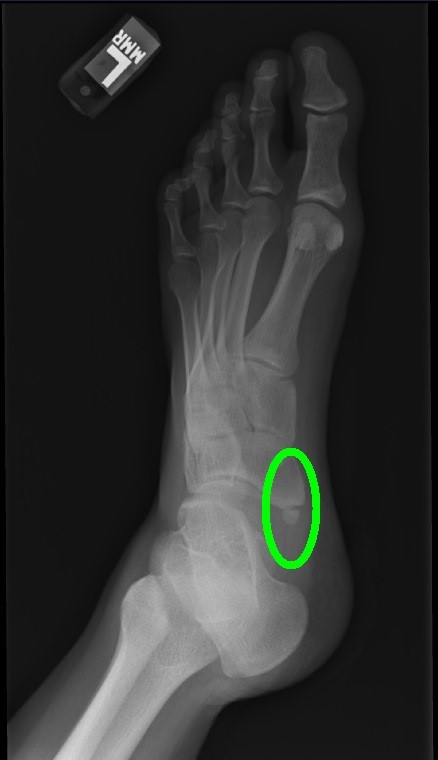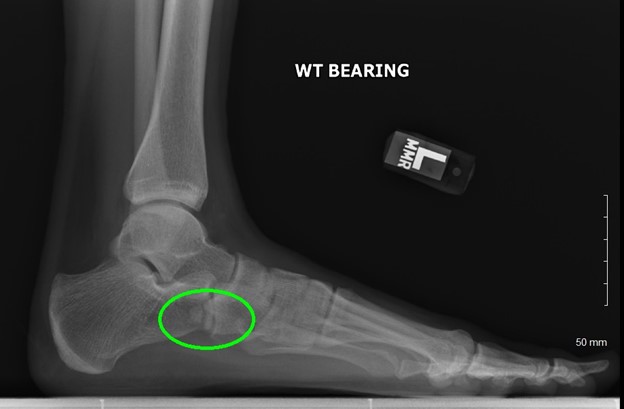Description
An accessory navicular is an extra bone that occurs in the foot and is a common condition that can sometimes cause pain. It occurs when one of the bones in the foot does not fully unite. The extra bone occurs in the foot that helps to stabilize the arch. There are three types, with type 2 being the one that often causes symptoms.
Symptoms
Foot pain is the most common symptom, taking place with activities usually in the middle of the foot. A “bump” may be felt along the bottom and inside part of the foot. In this area, the bump may be prominent enough to affect shoe wear. Athletes with this condition often have more symptoms than non-athletes and may not respond well to non-surgical methods. Pain is often described as achy and occurs with activities.
Evaluation and Examination
Your surgeon will watch you walk as well as how your feet are positioned when you stand. They will look at your feet for bumps, areas of pain with touch, and for joint motion. They will see if the calf muscle is tight which can make symptoms worse. A flexible flatfoot can also be present, and your surgeon will try to determine which condition is the cause of your symptoms.
Other Tests
X-rays are usually taken, and they will show the type and size of the bone (Figure 1). A magnetic resonance image (MRI) of the foot may be obtained if it is unclear what is causing pain but is not usually needed (Figure 2).
Figure 1a: Oblique foot x-ray showing a type 1 accessory navicular (green oval).

Figure 1b: Side x-ray of a foot showing an accessory navicular (green oval). 
Figure 2: Foot MRI showing a symptomatic accessory navicular (green oval) with fluid signal consistent with inflammation and attempted healing. 
Treatment Options
Non-operative methods are tried first, including wider shoes, calf stretches, and pads to place over the bump for extra cushioning. Orthotics may be tried but often can make symptoms worse as the bump is in a place where orthotics usually place pressure for support. Special orthotics can be made to decrease the pressure in the pain area but need to be made special for a patient. If non-operative measures fail to relieve pain, then operative procedures can be performed, usually a simple excision with possible tendon advancement (Figure 3).
Figure 3: Intra-operative x-rays showing before (red oval) and after (green oval) pictures following the excision of an accessory navicular. 
Prognosis
Most patients that have an accessory navicular do not experience any symptoms. For those that do, non-operative options usually help, and surgery is rarely required. For patients who do need surgery, once removed, the majority will have complete pain relief long term.
More Information
Orthoinfo: Accessory Navicular orthoinfo.aaos.org/en/diseases—conditions/ortho-pinion-accessory-navicular/

 POSNA.org
POSNA.org



